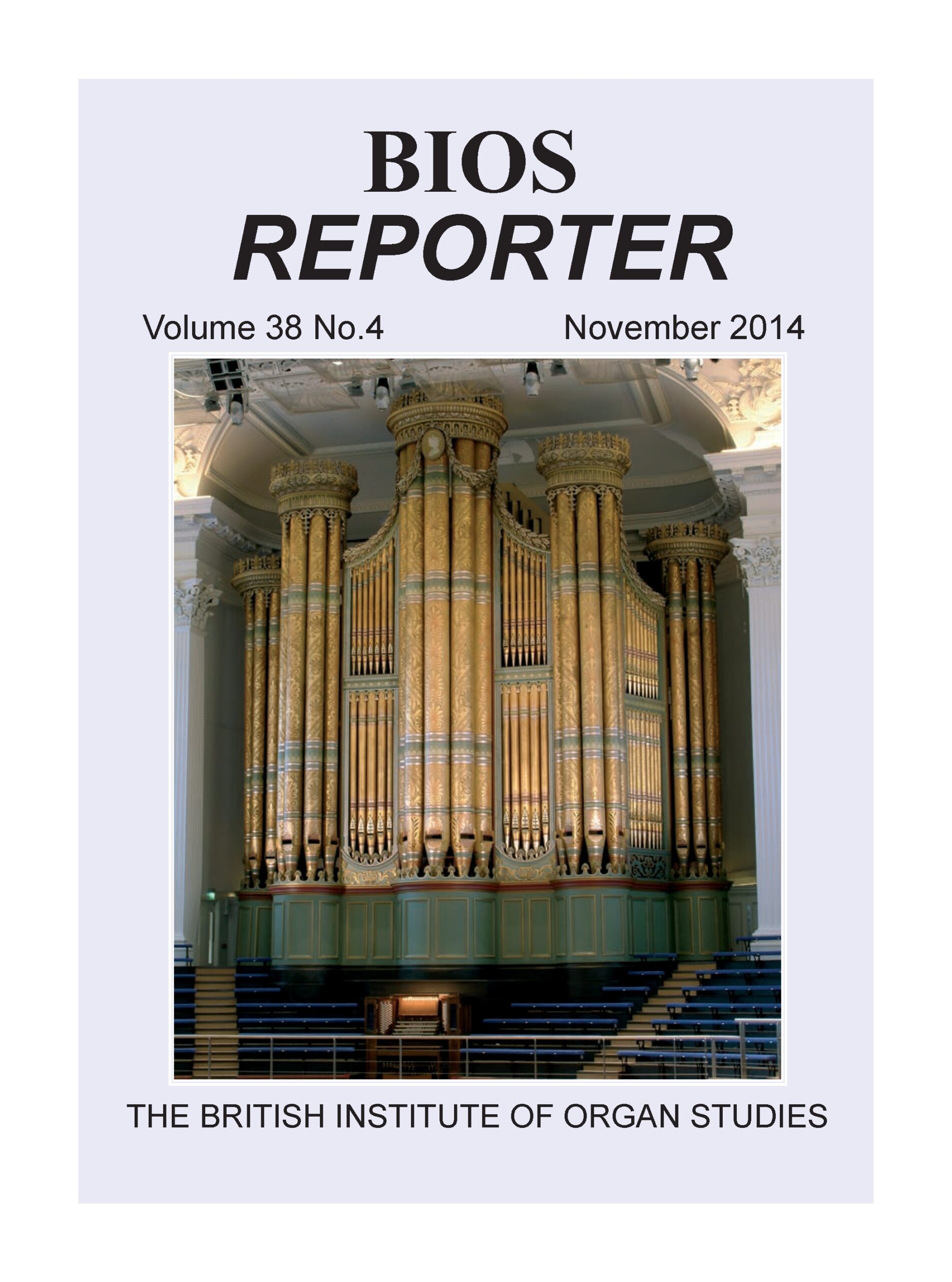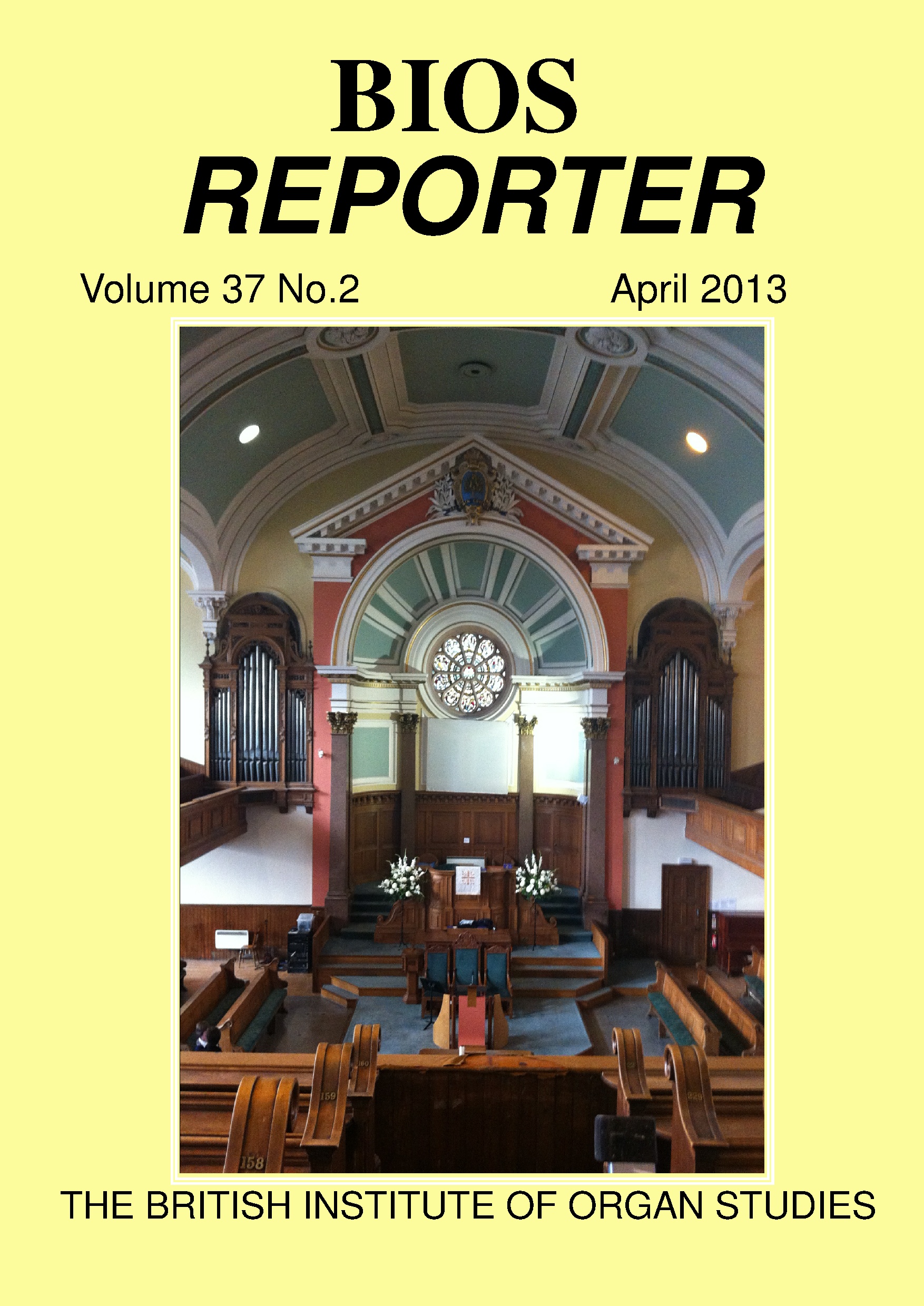Author: Matt Dixon

BIOS Reporter – Volume 38, No.4 – November 2014
Since the most recent edition of the Reporter, two of our long-serving helpers have indicated that the time has come for them to step down from office. Melanie Plumley became our Membership Officer in 2002, later also combining this with the work of Publicity Officer. In these capacities she has been an invaluable member of…

BIOS Reporter – Volume 38, No.3 – July 2014
The summer is here and the birds are singing! I wonder how long until autumn arrives. In the summer there is always the temptation to enjoy the good weather and find an outdoor pursuit, but come November, when the thoughts of imminent Christmas Carol Concerts are foremost, it is time again to don the third…

BIOS Reporter – Volume 38, No.2 – April 2014
A few months ago, a member of the public sent the Secretary the picture on the front cover in the hope that a suitable home could be found for it. It was assumed that the picture should go to the British Organ Archive, however, the location of the organ and its builder was unknown, so…

BIOS Reporter – Volume 38, No.1 – January 2014
I recently attended two very different organ recitals, and thought of Mark 6:4! The first was in St Mary’s RC Cathedral, Edinburgh and finished with a performance of Rachmaninov’s 2nd Piano Concerto, using the organ instead of an orchestra. The organ is based on the 1882 Wilkinson & Son organ from Preston Town Hall. The…

BIOS Reporter – Volume 37, No.4 – October 2013
In this issue of the “Reporter” you can read an interesting article of Durham Cathedral Organs. It is unlikely that any reader of this periodical would not have visited or heard of Durham Cathedral, so it is fascinating to read about such a famous building. It is also fascinating to read about Irish organists and…

BIOS Reporter – Volume 37, No.3 – July 2013
You will have already noticed that this issue of “The Reporter” is larger than usual. Unfortunately this is not as a result of a vast number of printed articles, rather that there is a large amount of material printed from the AGM, together with other regular reports. I apologise to those members who have submitted…

BIOS Reporter – Volume 37, No.2 – April 2013
Some interesting questions have been raised in the letters printed and I would like to pick up on one or two points if I may. Recently I had cause to play the Sneztler organ in the premises of The Royal Order of Scotland, Edinburgh which was installed in 1757. This organ is in very original…

BIOS Reporter – Volume 37, No.1 – January 2013
I am well aware of the importance of our academic writings and I am very happy to be associated with them. It has recently come to my attention that an organ near Edinburgh has recently been rebuilt to a “historic” specification, with a shortened swell and a lot of additions being removed. An organist friend…

BIOS Reporter – Volume 36, No.4 – October 2012
This being my first edition of the Reporter as editor, I would like to take the opportunity to thank my predecessor David Shuker for his help in handing over the position and also for his work over the past few years as editor. He has done an excellent job and I am sure, as you…

BIOS Reporter – Volume 36, No.3 – July 2012
The 2012 Oxford Residential conference may not have provided a clear answer to the question posed by the organisers (see p 67) but one of the talks did cover a relevant subject in a very thought-provoking way. Timothy Day’s exploration of the origin of the contemporary ‘Anglican sound’ was based on the availability of almost…